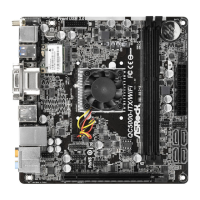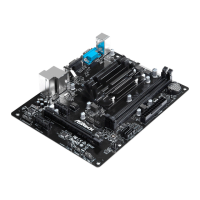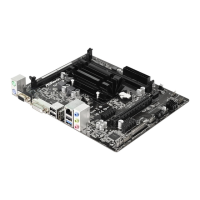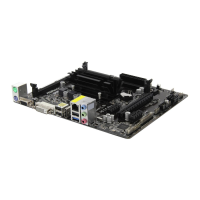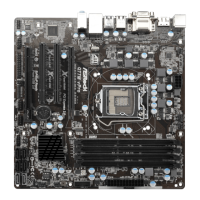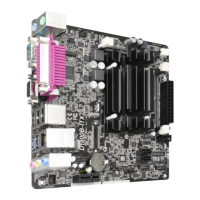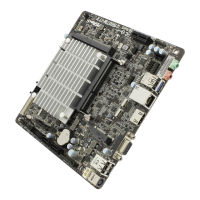
Do you have a question about the ASROCK QC5000M and is the answer not in the manual?
| Non-ECC | Yes |
|---|---|
| Memory slots type | DIMM |
| Number of memory slots | 2 |
| Supported memory types | DDR3-SDRAM |
| Maximum internal memory | 16 GB |
| Supported memory clock speeds | 1066, 1333, 1600 MHz |
| Audio chip | Realtek ALC887 |
| Cooling type | Passive |
| Certification | FCC, CE, WHQL, ErP/EuP |
| Component for | PC |
| Power source type | ATX |
| PC health monitoring | CPU, FAN, Temperature, Voltage |
| Audio output channels | 7.1 channels |
| Motherboard form factor | micro ATX |
| Motherboard chipset family | - |
| Windows operating systems supported | Windows 10 Education, Windows 10 Education x64, Windows 10 Enterprise, Windows 10 Enterprise x64, Windows 10 Home, Windows 10 Home x64, Windows 10 Pro, Windows 10 Pro x64, Windows 7 Enterprise, Windows 7 Enterprise x64, Windows 7 Home Basic, Windows 7 Home Basic x64, Windows 7 Home Premium, Windows 7 Home Premium x64, Windows 7 Professional, Windows 7 Professional x64, Windows 7 Starter, Windows 7 Starter x64, Windows 7 Ultimate, Windows 7 Ultimate x64, Windows 8, Windows 8 Enterprise, Windows 8 Enterprise x64, Windows 8 Pro, Windows 8 Pro x64, Windows 8 x64, Windows 8.1, Windows 8.1 Enterprise, Windows 8.1 Enterprise x64, Windows 8.1 Pro, Windows 8.1 Pro x64, Windows 8.1 x64, Windows XP Home, Windows XP Home x64, Windows XP Professional, Windows XP Professional x64 |
| Processor cores | 4 |
| Processor socket | NA (integrated CPU) |
| Processor manufacturer | AMD |
| Compatible processor series | AMD A |
| Graphics card | Radeon HD 8330 |
| Maximum resolution | 2048 x 1536 pixels |
| USB 3.2 Gen 1 (3.1 Gen 1) connectors | 0 |
| Supported storage drive interfaces | SATA III |
| PCI Express x16 (Gen 2.x) slots | 1 |
| BIOS type | UEFI AMI |
| ACPI version | 1.1 |
| BIOS memory size | 32 Mbit |
| USB 2.0 ports quantity | USB 2.0 ports have a data transmission speed of 480 Mbps, and are backwards compatible with USB 1.1 ports. You can connect all kinds of peripheral devices to them. |
| LAN controller | Realtek RTL8111GR |
| Ethernet interface type | Gigabit Ethernet |
| Cables included | SATA |
| Processor frequency | 1.5 GHz |
| Sustainability certificates | RoHS |
| Width | - mm |
|---|
Lists items included in the motherboard package.
Details the technical specifications of the QC5000M motherboard.
Illustrates and labels the physical components and connectors on the motherboard.
Describes the rear input/output ports and their functions.
Outlines essential safety measures and precautions before installing hardware.
Provides step-by-step instructions for installing RAM modules correctly.
Explains the types and uses of the motherboard's PCI Express slots.
Details the function and configuration of various jumpers on the motherboard.
Explains the purpose and connection of internal headers and connectors.
Guides users on installing necessary drivers from the support CD.
Introduces the ASRock APP Shop for downloading software and utilities.
Provides an overview of the ASRock APP Shop user interface elements.
Explains how to find, install, and manage applications from the ASRock APP Shop.
Details how to update the BIOS and drivers using the ASRock APP Shop.
Describes the settings available within the ASRock APP Shop for customization.
Introduces the UEFI Setup Utility and its purpose.
Explains the main menu bar options within the UEFI Setup Utility.
Lists and describes the keyboard keys used for navigating the UEFI Setup Utility.
Displays the system overview upon entering the UEFI Setup Utility.
Covers overclocking features and settings for performance enhancement.
Details memory timing settings for performance tuning in UEFI.
Explains the Command Rate setting for memory performance.
Allows configuration of advanced system parameters like CPU, Chipset, etc.
Configures CPU-related features such as Cool'n'Quiet and SVM.
Configures integrated graphics, audio, LAN, and other chipset features.
Manages SATA controller modes and hard disk monitoring (S.M.A.R.T.).
Configures Super IO devices like Serial Ports and PS/2 Y-Cable.
Manages ACPI settings for power saving and wake-up events.
Controls USB ports, including legacy support and USB 3.0.
Configures Trusted Platform Module (TPM) security features.
Provides access to various utility tools like OMG, UEFI Tech Service, and Instant Flash.
Monitors system hardware status, including temperatures, fan speeds, and voltages.
Configures boot device priority, boot modes, and other startup settings.
Manages Compatibility Support Module for legacy device booting.
Manages system passwords and Secure Boot settings.
Options for saving changes, discarding changes, and loading defaults in UEFI.


